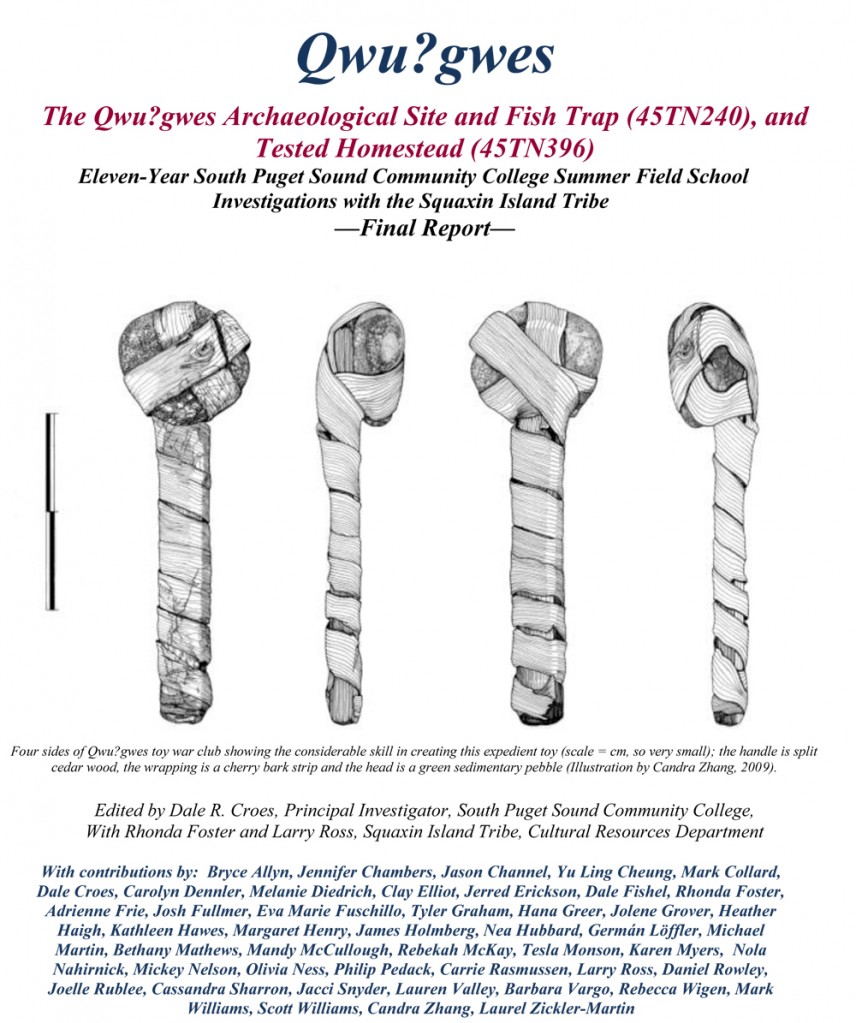
Qwu?gwes Archaeological Wet Site Final Report


I have scanned illustrations (example here), re-made graphs, scanned computer generated maps, and digitized text for the Ozette Village wet site basketry analysis of 1977. Since only poor copies of this work are in circulation, I wanted to make a better copy available for future wet site basketry research (though still a low resolution copy and in two parts because of its size):   ANCIENT BASKETRY ATTRIBUTES AND TYPES–CROES 1977 DISSERTATION Part I ; OZETTE VILLAGE BASKETRY FUNCTIONAL CLASSIFICATION AND CONCLUSIONS–CROES 1977 DISSERTATION Part II
I have also posted here a Useful Wet Site Research References reflecting ancient basketry research that has been conducted since 1977: Useful References for Wet Site Basketry Research and Reports since 1977 Ozette Dissertation
The patterns of inter-site comparisons in 1977 seem to be holding up–and the new data uncovered seems to only bolster these general patterns (even cladistic analyses). Hope this is helpful to researchers–do let me know references I undoubtedly left out. Thanks, Dale Croes
Just Published! Wetland Archaeology and Beyond, Theory and PracticeÂ
By Francesco Menotti
Date: 2012–Publisher: Oxford University Press
ISBN: 978-0-19-957101-7
To order the book click HEREÂ
 Wetland Archaeology and Beyond takes the reader through the fascinating biography of wetland archaeology, from the dawn of the discipline to its remarkable achievements. Through a discussion of a large variety of worldwide wetland archaeological sites and their material culture, Menotti offers an appreciative study of the people who occupied these sites and who created the archaeological artefacts. The volume also includes a comprehensive explanation of the procedures and research processes involved in archaeological practice and theory.
Focusing on the relationship between archaeological experts and the general public, Menotti highlights the importance of this relationship for the future of the discipline as wetland ecosystems continue to disappear at an inexorable rate – and with them our invaluable cultural heritage. TABLE OF CONTENTS:
|
Â
     Â
By Kurt Altorfer
Die prähistorischen Feuchtbodensiedlungen am Südrand des Pfäffikersees: Eine archäologische Bestandesaufnahme der Stationen Wetzikon-Robenhausen und Wetzikon-Himmerich
Publisher: Baudirektion Kanton Zürich
ISBN: 978-3-905681-59-8
For more information email the author at: kurt.altorfer@bd.zh.ch
The book shows how a combination of archive research and recently carried out excavations could lead to significant results!
To order the book click HERE: die-prahistorischen-feuchtbodensiedlungen-am-sudrand-des-pfaffikersees[1]
 Read the review in the European Journal of Archaeology 14(1-2): 301-303